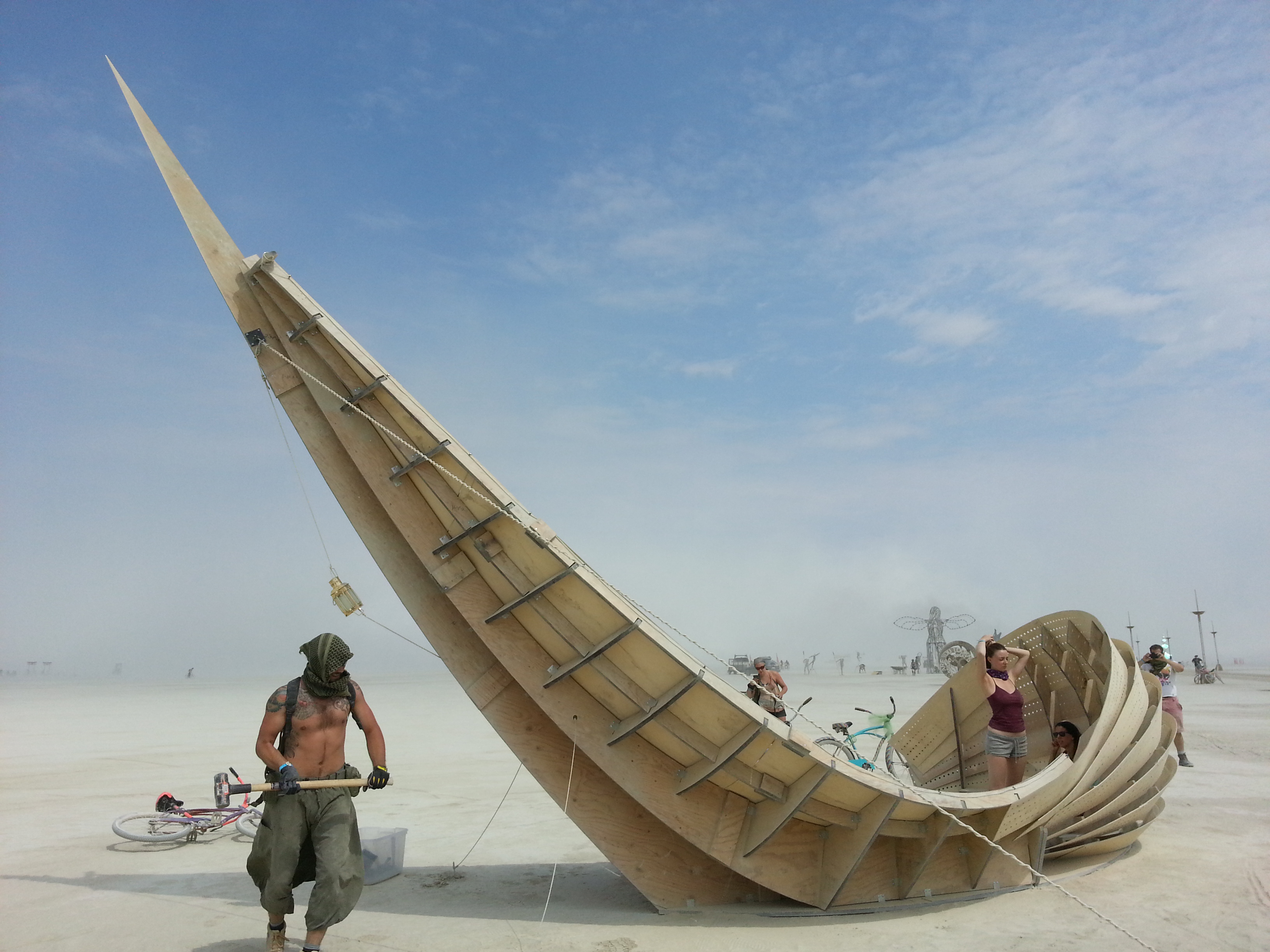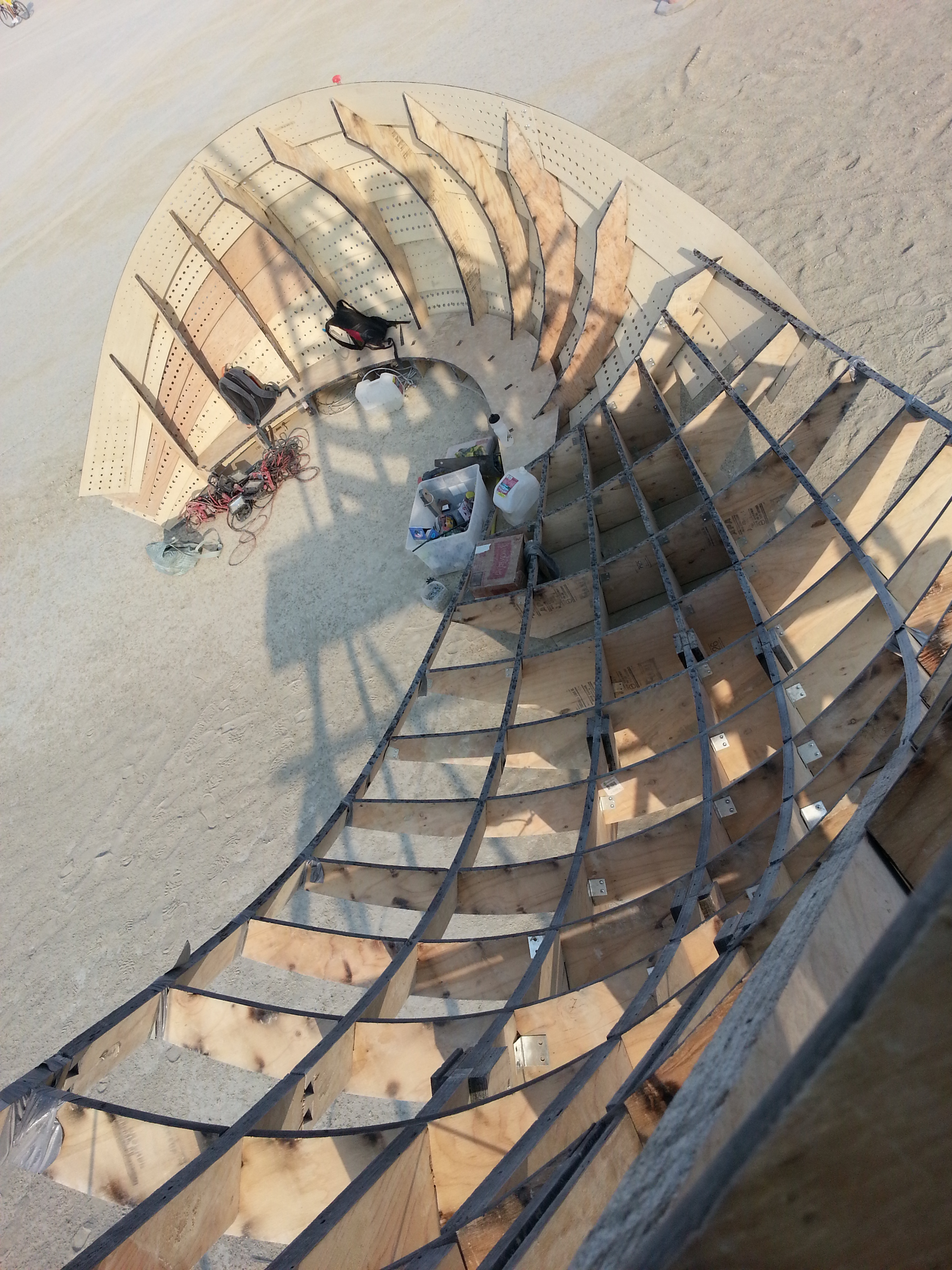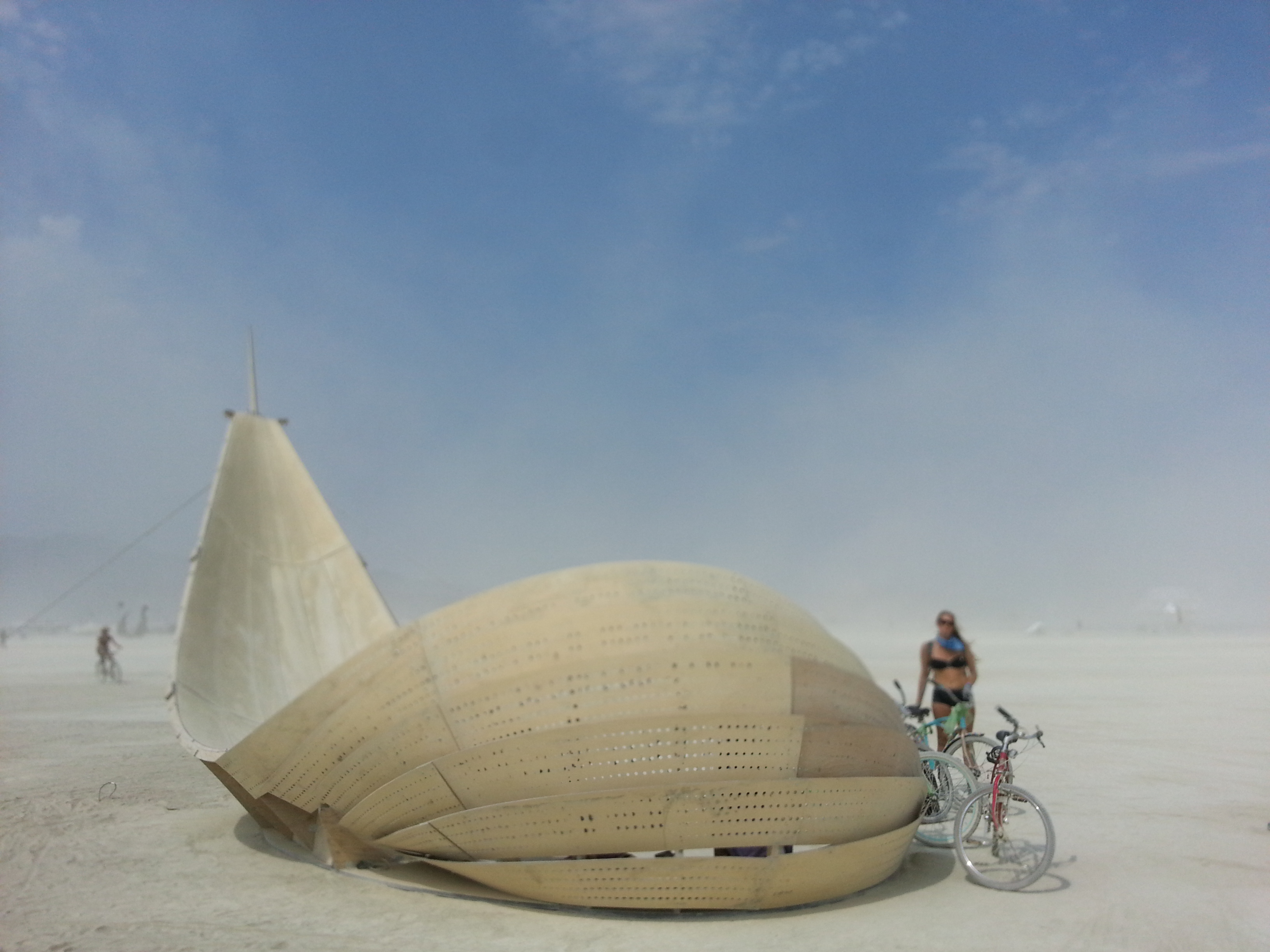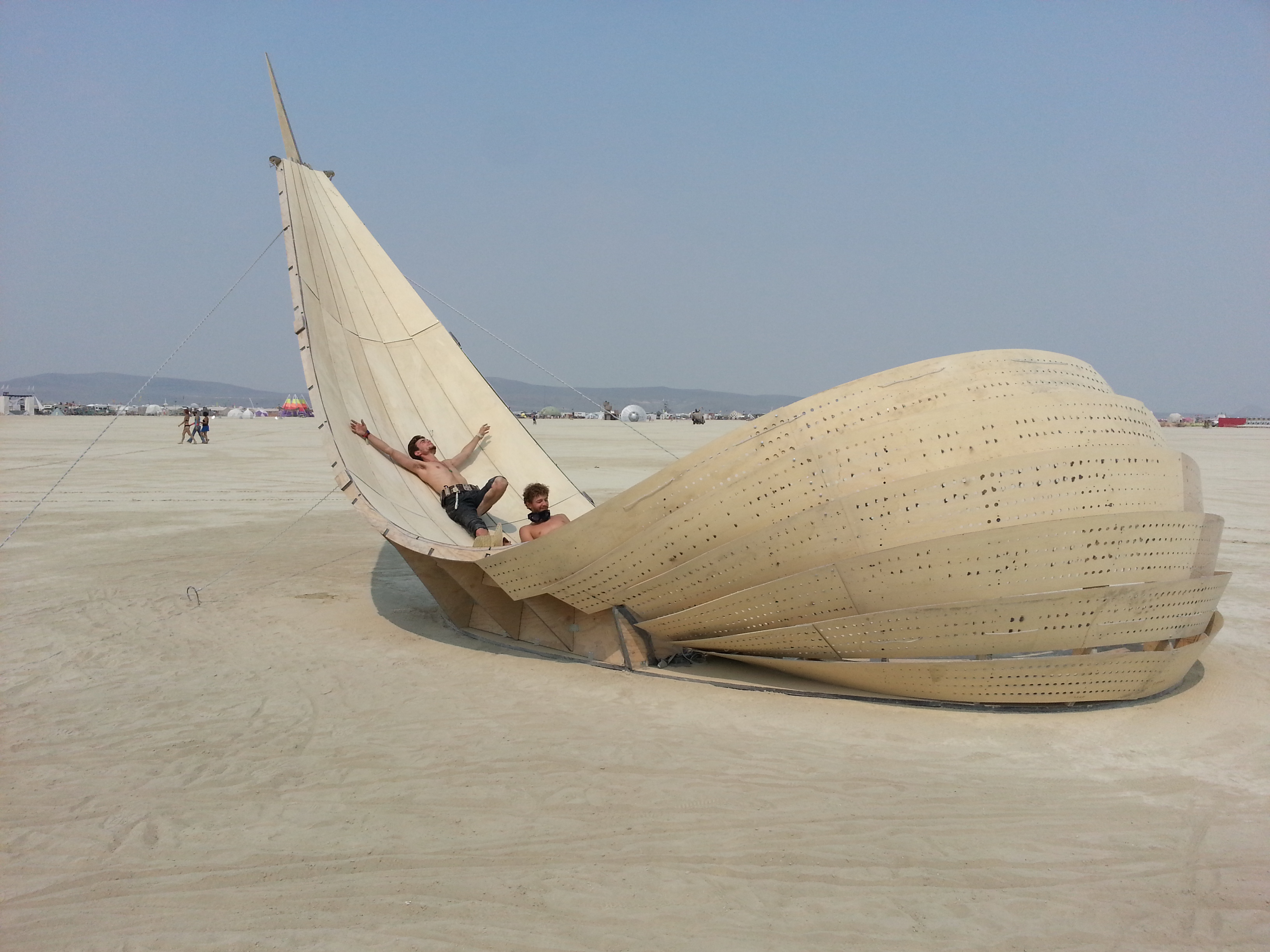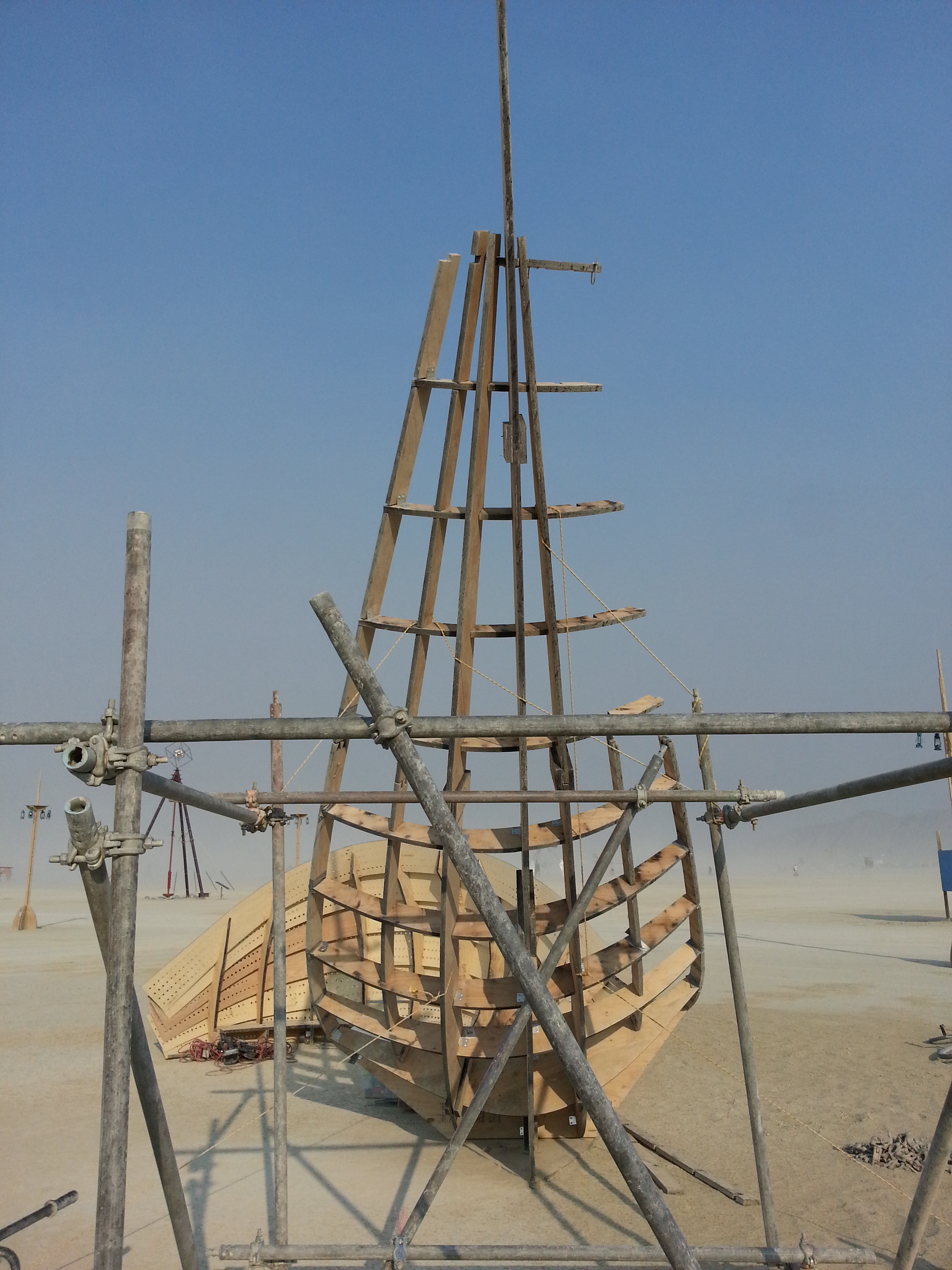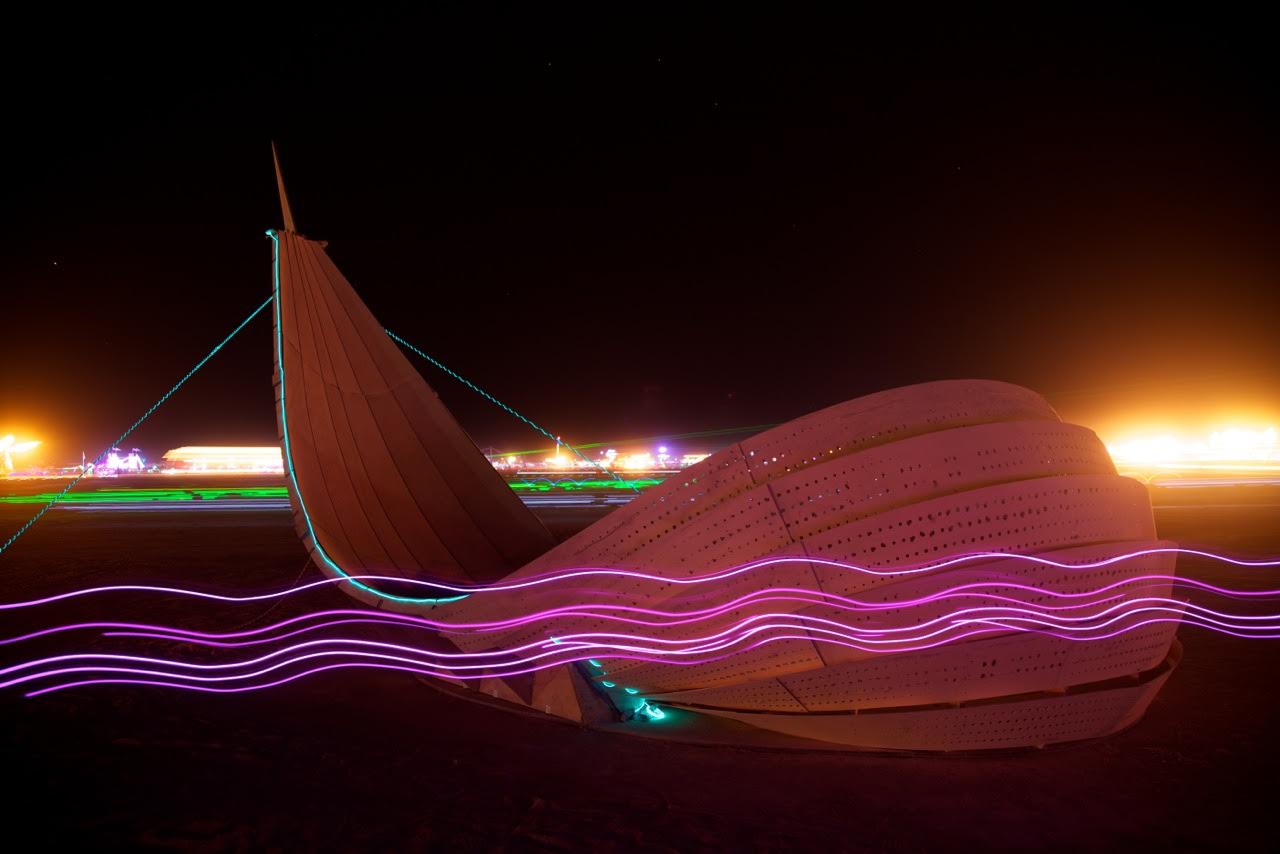YEAR:
2013
LOCATION:
BLACK ROCK CITY
STATUS:
COMPLETED
About the Project
Shipwreck (Project Details) and Fractal Cult (Project details) are two architectural art pieces built at the Burning Man Festival 2013 by the students and tutors of Diploma Studio 10, University of Westminster.
“Shipwreck and Fractal Cult have made the journey from the drawing boards of the studio, a Kickstarter for funding, and finally across the pond to construction at Burning Man. Watching this studio has been amazing to watch from the outside, a rare glimpse into the studio life and culture of another architecture school. Not only that the dedication from their teachers from design to realization is rather impressive.” FuturePlus.net
Here is a text that we wrote describing the experience:
Diploma Studio 10:
Toby Burgess and Arthur Mamou-Mani lead Diploma Studio 10 at the University of Westminster. They both believe that involvement is key to the learning process and therefore always try to get their students to “get out and build” their designs in the real world. The studio starts the year with the study of systems, natural, mathematical and architectural systems of all sorts, paired with intense software training to build up skills and a set of rules to design a small-scale project which they will be able to build during a real event in the summer. Throughout the year, they build large-scale prototypes and draw very accurate technical drawings, they also need to provide a budget and explain how it makes sense within the wider context of the festival, some of them will event start a crowd-funding campaign to self-finance the projects. Our ultimate goal is to give them an awareness of entrepreneurship in Architecture and how to initiate projects as this is for us the best way to fight unemployment in our profession.
Burning Man and the 10 Principles:
The Burning Man festival takes place every summer in Black Rock desert, Nevada. It is a “participant-led” festival in which the activities are initiated by the people attending it. There are around 60,000 “burners” every year building a giant temporary city in which they create a social experiment which follows the 10 principles of Burning Man. They conclude the festival by burning a large sculpture of a Man.
What interested Toby and Arthur are the 10 principles which guide the “burners”: Radical Self-Reliance, Radical Inclusion, Gifting, and Leaving No Trace, to name a few. Designing with these rules in mind helps students understand basic issues of sustainability. Designing for Burning Man also helps the students to design with “playfulness” in mind, as all the structures have to be climbable and interactive. We are not the only ones inspired by these rules, Sergei Brin, co-founder of Google, asks all his staff to follow the principles when they come up with new ideas.
On-site:
The team grew little by little, many of our students could not afford the trip or could not take such a long time off so we asked around if anyone else would like to join us and thanks to our blog posts and active social networking online, students from the Architectural Association, Columbia or UCL started showing interest and joined the team.
Our first surprise on site was the power of the dust storm. One of our Yurt flew away and some of us got stuck in different places of the site seeking shelter. We were terrorised. Sleeping in tents was also extremely hard as you would be awakened by temperatures approaching 40 degrees Celsius, at the end of the construction, a lot of us would sleep in the foam hexayurts in which we were storing equipment at first.

The Concept
The Story:
In our first year at Westminster, we found out that our student could submit their Burning Man proposals and receive a grant from the organizers. After receiving 20 submissions from the same school, the organizers were very intrigued and decided to contact us. The director of the Art Grant told us that she loved the project but that all of them were just not possible in the context. She decided to visit us in London to explain what we could do to submit better projects the following year which we did. On the second run, the festival chose two projects, Shipwreck by Georgia Rose Collard-Watson and Fractal Cult by Thanasis Korras.
These two projects are representative of the way we run our studio: Thanasis looked at Fractal on Brief01 and Georgia looked at ways to bend and assemble strips of wood. They both explored these systems before submitting a project with a very strong narrative which fitted perfectly the burning man philosophy. Thanasis linked his Fractal to the symbol of “Merkaba” whereas Georgia told the story of a shipwreck which offered shelter from the dust storms.
Once the project was chosen, we partnered with an engineer, Ramboll and started researching suppliers and fabrication facilities in the USA. We took the 3D files from concept to parametric models for fabrication. We started a Gantt chart with every step to take from the rental of a 24ft truck to the collection of items to demolition.
One of the main aspects that required a lot of planning was the camp. We had to plan every meal and food that would not perish under the extreme conditions. We also found a way to rent a whole camp equipment from past burners.
TEAM
Toby Burgess and Arthur Mamou-Mani (Project Directors), Thanasis Korras (Designer of Fractal Cult), Georgia Rose Collard-Watson (Designer of Shipwreck), Jessica Beagleman (Food & Meals), Natasha Coutts (Camp and Rentals), Sarah Shuttlesworth, Andy Rixson, Luka Kreze, Tim Strnad, Philippos Philippidis, Nataly Matathias, Marina Karamali, Harikleia Karamali, Antony Joury, Emma Whitehead, , Jo Cook, Caitlin Hudson, Dan Dodds and Chris Ingram.
Client
Burning Man
Engineers
Ramboll Computational Design (RCD)
Stephen Melville, Harri Lewis, James Solly
Suppliers
Hess Precision (Plywood Laser Cutting), One-to-Metal, (Metal Punching and Folding), Safway (Scaffolding), West Coast Netting (Netting)
Special Thanks
BettieJune, Ben Stoelting, Kevin Meers, Caroline Holmes, Chloe Brubaker, Papa Bear, DPW Metal Workshop
© Photos by NKGuy, Jo Cook, Arthur Mamou-Mani, Toby Burgess, Luka Kreze, Thanasis Korras, Antony Joury

